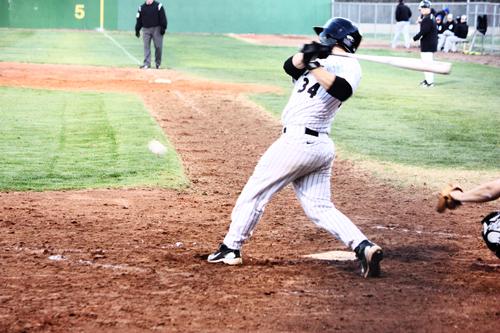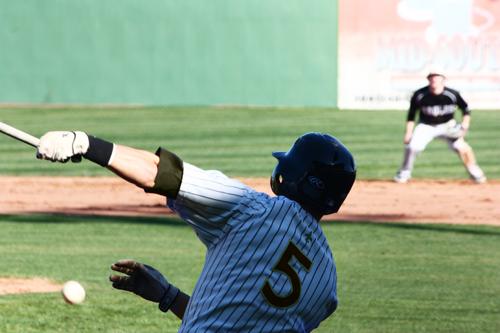The team that hit 18 home runs last year will have to rely even more on manufacturing runs this season with the new NAIA bat regulations.
Regulations that took effect at the start of the 2011 changed the way the bats are manufactured. The changes to the materials that are used in these new bats have caused them to perform similarly to wooden bats.
Marketing senior and Wolfpack pitcher Carl Labit said that the ball comes off the bat differently.
“It doesn’t really have a flex to it when the ball impacts the bat,” he said.
Labit also noted that the speed at which the ball leaves the bat is slower. Though he is unsure of the exact speed difference, Labit said he has heard that a ball hit by the bats used last year could come off the bat as fast as fast as 150 mph. According to the same speed estimate, a similarly hit ball would only reach about 105 mph with the new bats.
Despite this, the Wolfpack hit totals are similar to what they had accumulated at this point last year. Through the first 13 games of the 2010 season the ‘Pack had 90 hits. After game 13 this season, they have 86 hits.
The team got off to a 4-9 start last season and had only 33 RBI during that span. The Wolfpack are off to a 6-7 start this year and have 67 RBI. Batting averages will likely be lower than last season, however. The team is currently batting .263 after having an average of .294 at the end of last season.
Pitching has seemed to benefit from the reduction in opponent offense. At this point last year the ‘Pack had a team ERA of 7.95. Pitching has lowered their ERA by more than two full points with an average of 5.60. The total of home runs given up has also fallen from 10 last year to seven this year.
“There will be situations where I’ll get hit and I’m thinking it’s a home run by the swing, and it’s a normal fly ball to left field,” Labit said about the power-reducing numbers the bat has had.
Outfielder and marketing senior Ryan Scott has also noticed that hitting for power is more difficult.
“Home runs aren’t home runs anymore, and doubles are singles now,” he said. “The ball is still coming off the bat hard, but you can tell there’s a difference.”
Aside from the reduction in offensive production, one of the most noticeable differences for the players is the way the bat sounds.
“Last year’s bats probably had a little bit more ‘ping’ and more jump to them,” Scott said.
Even though the sound that many had associated with college baseball bats is gone, Scott said the overall feel has not changed much. The bat dimensions and weight are still the same and has not caused him to make any changes to his swing.
With doubles turning into singles and home runs turning into deep fly-outs, Loyola cannot rely on the big swing to score runs.
“We’ve done some good things,” said head coach Gerald Cassard about their base running. “Garrett Lacour and Tyler Duplantis have done a great job of stealing bases and getting into scoring position.”
Duplantis, management sophomore, has been successful in all three of his attempts to steal and Lacour, management freshman, has scored 11 runs.
While both Scott and Labit both said the changes to the game will be minimal, Labit said there could be a benefit for major league scouts. “They really get a good idea for if a guy’s going to be able to swing a wooden bat,” he said.
Hasani Grayson can be reached at
hkgrayso@loyno.edu







